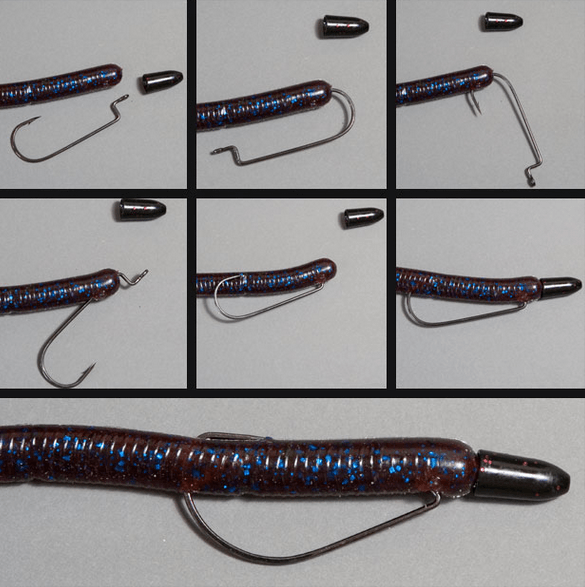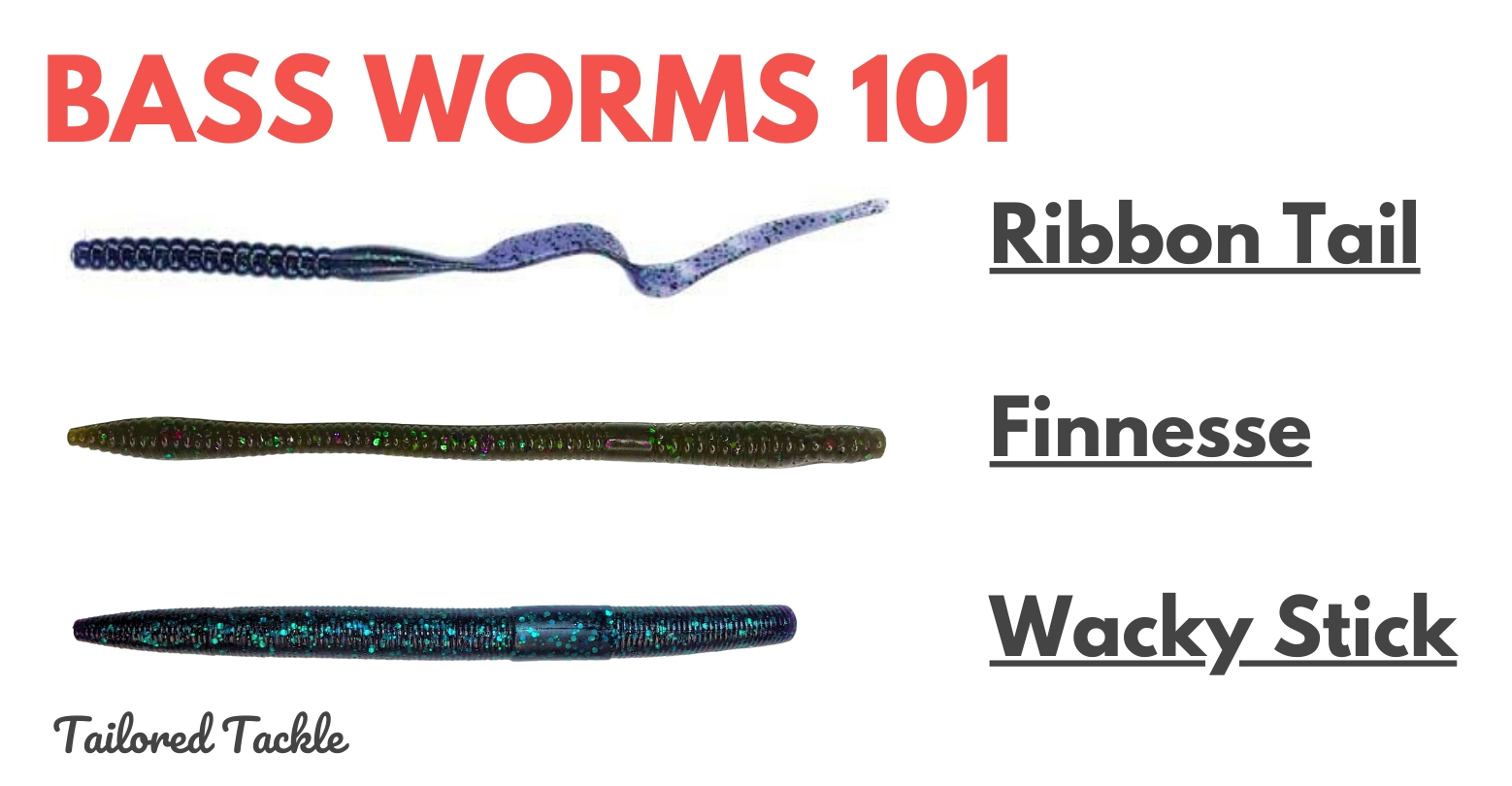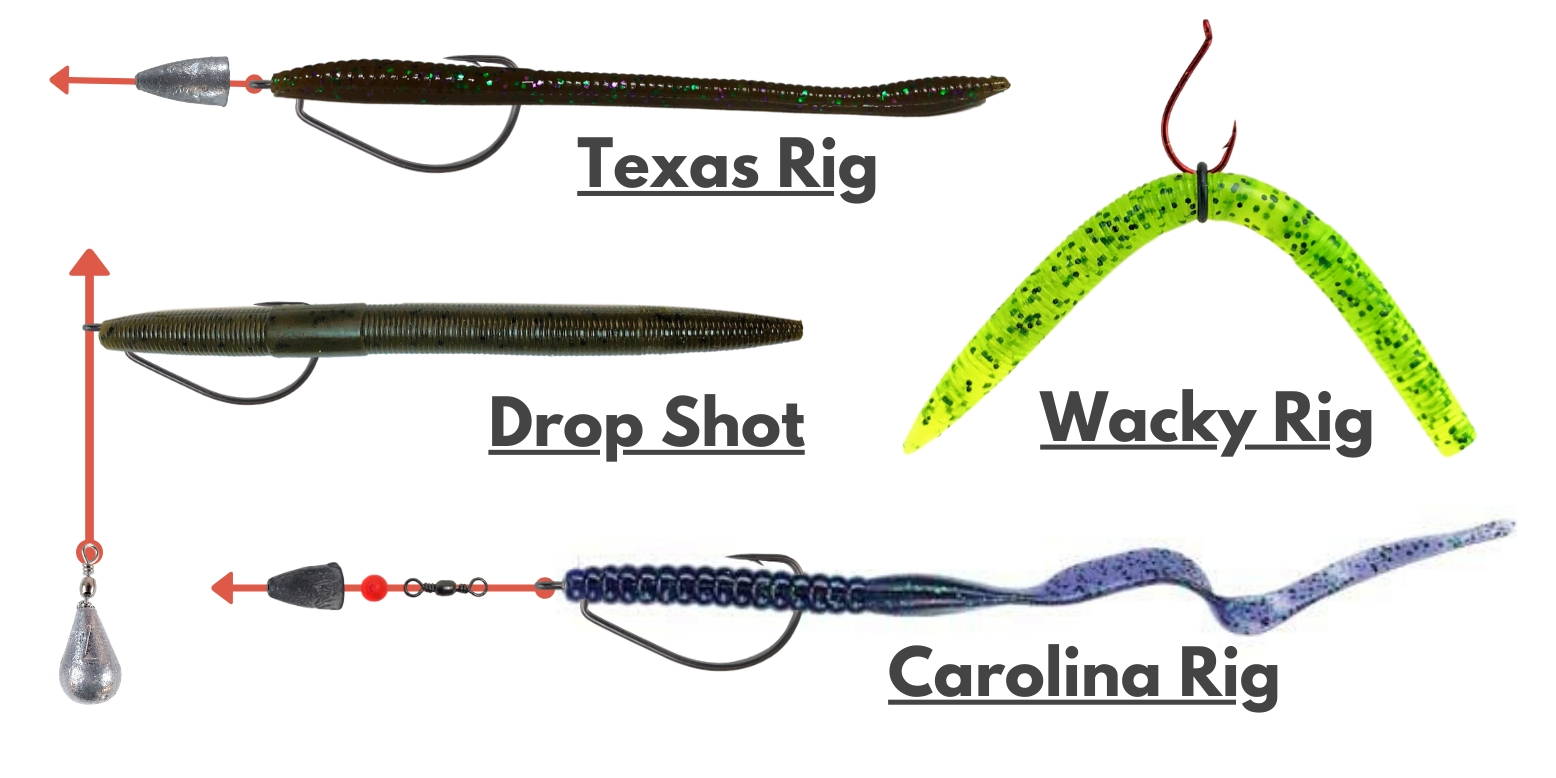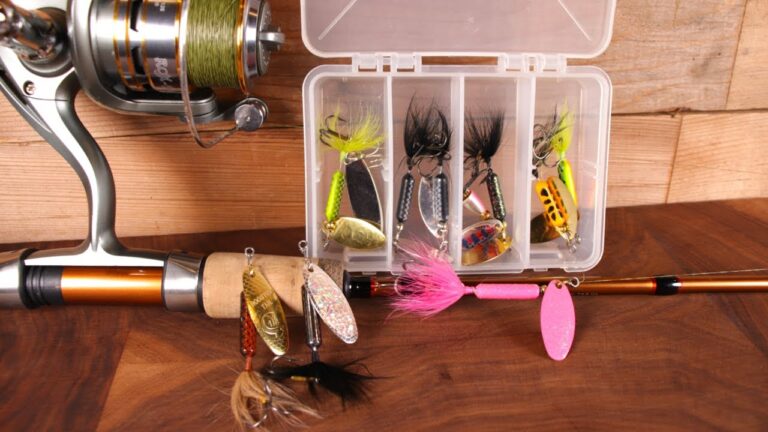How to Rig Plastic Worms

To rig plastic worms, start by selecting the appropriate hook, such as an Extra Wide Gap (EWG) for bulkier soft plastics. Slide a cone sinker onto your line and tie on the hook.
Jab the hook straight through the middle of the worm, allowing the top and bottom halves to dangle freely. Alternatively, you can Texas rig the worm by sliding the hook point into the top of the worm, then burying it back into the body.
Experiment with different rigging techniques to find what works best for your fishing needs. Don’t forget to try deadsticking, hopping, dragging, or swimming the worm for different presentations.
Types Of Rigs
Types of Rigs: There are several types of rigs that are commonly used for fishing with plastic worms. These include the Texas Rig, Carolina Rig, Wacky Rig, Neko Rig, Dropshot, Shakey Head, and Ned Rig. Each rig has its own unique characteristics and is used in different fishing scenarios. It’s important to understand the specifics of each rig in order to effectively use plastic worms for fishing.

Credit: tailoredtackle.com
Rigging Techniques
Types of Hooks: When it comes to rigging plastic worms, choosing the right hook is crucial. The most commonly used hooks for rigging plastic worms are offset hooks, specifically the Extra Wide Gap (EWG) style. These hooks have a larger gap between the point and shank, allowing for easy hooksets and accommodating bulkier soft plastics.
Common Mistakes: There are a few common mistakes anglers make when rigging plastic worms. One of the most common mistakes is not concealing the hook properly. It’s important to thread the worm onto the hook in a way that hides the hook point, making it more appealing to fish. Another mistake is not finding the right entry point for the hook. The best entry point is usually in the center of the worm, ensuring proper balance and presentation.
Rigging a Zoom Fluke: Rigging a Zoom Fluke is slightly different from the traditional Texas rig. Start by inserting the hook into the head of the Fluke, then pull it out about a quarter inch down the body. Thread the body of the Fluke onto the hook, making sure it is straight and even. Be careful not to tear the Fluke while rigging.
Choosing Offset Hooks: When picking out offset hooks, consider the size and thickness of the plastic worm. Offset hooks come in various sizes, ranging from 1/0 to 5/0, and it’s important to match the size of the hook to the size of the worm. Additionally, choose hooks with a sharp point and a strong shank for optimal hooksets.
Fluke Tips: When fishing with a Fluke, try twitching or jerking the bait to mimic the action of a wounded fish. The Fluke’s darting and gliding motion can entice fish into biting. Experiment with different retrieval speeds and techniques to find what works best in your fishing location.
Straight Shank Hooks: Straight shank hooks are another option for rigging plastic worms. These hooks provide a more natural presentation and allow for better hook penetration. Straight shank hooks are typically used for finesse fishing or when fishing in heavy cover, where a weedless presentation is desired.
Best Hooks For Plastic Worms
Discover the best hooks for plastic worms and learn how to rig them effectively for your fishing adventures. Enhance your bass fishing skills with expert tips and techniques in Austin, Texas.
| Best Hooks for Plastic Worms |
|
Extra Wide Gap (EWG) Hooks The Extra Wide Gap (EWG) hook is considered the best hook for plastic worms. It has a larger gap between the point and shank, providing enough space for bulky soft plastics. The EWG hook style is versatile and can be used for various soft plastic lures. It excels with bulkier soft plastics due to its larger gap, allowing for better hookups. It is a must-have for bass fishing enthusiasts. Other Recommended Hook Styles In addition to the Extra Wide Gap (EWG) hooks, other popular hook styles for plastic worms include the straight shank hook and the offset hook. The straight shank hook offers a simple and effective rigging for plastic worms, while the offset hook helps conceal the hook and provides better hooksets. Consider using these hook styles depending on your fishing needs and the type of plastic worms you are using. Remember to match the hook size to the size of your plastic worm for the best results. Experiment with different hook styles to find the one that works best for you and your fishing technique. |

Credit: tailoredtackle.com
Additional Tips And Resources
In bass fishing, rigging plastic worms can be an art. Preferably, use the Texas Rig as a straightforward and effective method. When using weightless or light-weight rigs, a sinker is unnecessary. Keep in mind that the type of rig needed depends on the conditions of the fishing area. Always aim for a natural presentation, and experiment with different rigs to find what works best for you. Remember to conceal the hook well to prevent snags and ensure a smooth retrieve. Explore different rigging techniques and hooks to maximize your chances of catching a trophy bass.

Credit: m.youtube.com
Frequently Asked Questions Of How To Rig Plastic Worms
What Is The Best Way To Rig A Plastic Worm?
To rig a plastic worm, start by threading a bullet weight onto the line, followed by a long-shank hook suitable for plastic worms. Jab the hook straight through the worm’s middle, letting the top and bottom halves dangle freely. Another option is the Texas Rig, which involves using a cone sinker and a weedless hook.
Experiment with different techniques like hopping, dragging, swimming, or deadsticking the worm to attract fish.
What Is The Best Hook For Plastic Worms?
The best hook for plastic worms is the Extra Wide Gap (EWG) style, perfect for bulkier soft plastics due to its larger hook gap. Key worm hook styles include Gamakatsu and Owner hooks. This hook style excels with larger soft plastic worms, providing enough room for the bulkier plastics.
Do You Need A Sinker With Plastic Worm?
Yes, you need a sinker with a plastic worm, especially when using the Texas Rig. Slide a cone sinker onto your line and tie on a long-shank hook to rig your plastic worm.
How Do You Rig A Plastic Lure?
To rig a plastic lure, start by threading a bullet weight onto the line, then tie on a long-shank hook. Jab the hook straight through the middle of the worm and let it dangle freely. Use fluorocarbon line for better invisibility.
Try different techniques like hopping, dragging, swimming, or deadsticking the lure.
Conclusion
Mastering the art of rigging plastic worms is crucial for successful bass angling. Whether you opt for the Texas rig or the Carolina rig, understanding the nuances of hook placement and worm selection can make all the difference. By incorporating these techniques, you can elevate your fishing game and reel in more impressive catches.




